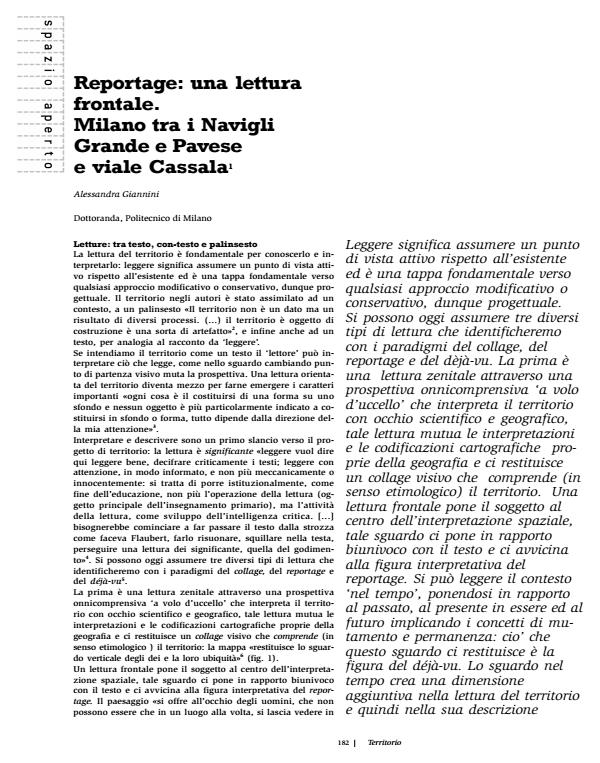Reportage: una lettura frontale. Milano tra i Navigli Grande e Pavese e viale Cassala
Journal title TERRITORIO
Author/s Alessandra Giannini
Publishing Year 2009 Issue 2008/47 Language Italian
Pages 5 P. 182-186 File size 1891 KB
DOI 10.3280/TR2008-047020
DOI is like a bar code for intellectual property: to have more infomation
click here
Below, you can see the article first page
If you want to buy this article in PDF format, you can do it, following the instructions to buy download credits

FrancoAngeli is member of Publishers International Linking Association, Inc (PILA), a not-for-profit association which run the CrossRef service enabling links to and from online scholarly content.
Reportage: a frontal reading. Milan between the Navigli Grande and Pavese canals and viale Cassala - To read means to assume an active viewpoint with regard to what exists and it is a fundamental stage in any approach to modifying or conserving things and therefore in planning them. A focused reading of a geographical area becomes a means of bringing out its important features. Three different types of reading can be assumed today which we will identify with the paradigms of collage, reportage and déjà-vu. The first is a zenithal reading through an all inclusive ‘bird’s eye view’ which interprets the land and its community with a scientific and geographical eye. This reading draws on the cartographical interpretations and codifications of geography and returns a visual collage which comprises the geographical area. A frontal reading places a person at the centre of the spatial interpretation in a one-to-one relationship with the text and it shows us the interpretative figure of reportage. The context can be read ‘over time’ by setting oneself in relation to the past, to the existing present and to the future implying the concepts of change and permanence: what this viewpoint returns is the figure of déjà-vu. Water is a very important feature of the area, both historically and today. Historically the built-up fabric of the district developed originally from the Darsena along the banks of the two canals. This fragmentary dispersion is underlined by the existence of rundown areas and the lack of a heart, a centre for the area.
Alessandra Giannini, Reportage: una lettura frontale. Milano tra i Navigli Grande e Pavese e viale Cassala in "TERRITORIO" 47/2008, pp 182-186, DOI: 10.3280/TR2008-047020